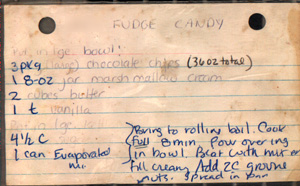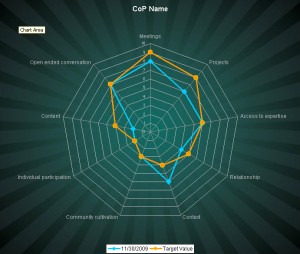Playing For Change | One Love.
And All You Need is Love
Wishing you and all of yours a peaceful, productive, learning and fun-filled year!
Happy New Years!
Playing For Change | One Love.
And All You Need is Love
Wishing you and all of yours a peaceful, productive, learning and fun-filled year!
Happy New Years!
 This curriculum and materials have not been updated in many years, but they are still a valuable resource that emerges from not only my work, but that of my teachers, Lisa Kimball, Howard Rheingold, Michele Paradise and many, many others. In a way, they are a glimpse back into the early days of the practice of online facilitation.
This curriculum and materials have not been updated in many years, but they are still a valuable resource that emerges from not only my work, but that of my teachers, Lisa Kimball, Howard Rheingold, Michele Paradise and many, many others. In a way, they are a glimpse back into the early days of the practice of online facilitation.
I have removed the original copyright designation and it is now available as a creative commons, non-profit, share alike resource. Enjoy and improve upon it, as so many others, like Tony Carr at University of Cape Town and Brad Beach of Central Gippsland TAFE have already done!
 This is the recipe my family has been making for the holidays FOREVER! (Well, at least for the last 40 or 50 years!) Since I am spending time with family and not so much blogging, I thought it would be good to share the recipe.
This is the recipe my family has been making for the holidays FOREVER! (Well, at least for the last 40 or 50 years!) Since I am spending time with family and not so much blogging, I thought it would be good to share the recipe.
Put in large bowl (really big, big, big) to allow stirring room:
Have ready at hand
Put in large kettle. Again, I mean big – the mixture boils up to four times it’s original volume as you cook it!
Bring the sugar/milk mix to a rolling boil stirring constantly. Cook a full eight minutes timed once the mixture comes to a boil — critical!!!.
Take off heat and pour over chocolate/butter/marshmallow mixture. Beat with mixer until creamy. Add nuts and spread in a pan to cool. Lick the bowl and beaters before washing!
I like to use a cookie sheet with high edges, but the size of pan depends on how thick you like your fudge. Mine is about 13×24. My siblings use smaller pans. My mom uses two Pyrex pans. Cut into pieces and enjoy! I like to put each piece in a little candy paper and pack into pretty packages to give away. But some years, the fudge is gone before that happens.
I also recommend this Rosemary/Lemon/Cornmeal cake. Delish! I made it this week for new friends in Seattle and we all seemed to enjoy it. Today we make my great grandmothers biscotti, fudge and perhaps two other cookies. So forget blogging. I’m home from nearly three months of travel and ready to nest!
 It is so lovely having a fabulous network – including people I just barely know, but who then hook in with a moment of insight, a remix or ready to augment a forming idea or practice. Gabriele Sani from World Vision in Italy has recently done this with the Community Orientations Spidergram from our Digital Habitats book. He saw a post I put on KM4Dev and immediately took it further! He has taken the spidergram and put it into an Excel spreadsheet. You simply put in the values in the table on tab 1 on the spreadsheet, and voila, a lovely spidergram image is produced (see tab 2 of the spreadsheet).
It is so lovely having a fabulous network – including people I just barely know, but who then hook in with a moment of insight, a remix or ready to augment a forming idea or practice. Gabriele Sani from World Vision in Italy has recently done this with the Community Orientations Spidergram from our Digital Habitats book. He saw a post I put on KM4Dev and immediately took it further! He has taken the spidergram and put it into an Excel spreadsheet. You simply put in the values in the table on tab 1 on the spreadsheet, and voila, a lovely spidergram image is produced (see tab 2 of the spreadsheet).
Here is the tool: CoP-Orientation-Spidergram-Tool
This is a great tool to help people visualize the diagram at a distance – when you don’t have the comfy proximity of a white board and a bunch of post it notes. I also love the visual background Gabriele put in – lovely.
Others have been sharing their spidergrams. I’ve been tagging them on Delicious. You can find my spidergram tags here: http://delicious.com/choconancy/spidergram. Here is one from Sylvia Currie that she did with Gliffy – another way to do the activity:
So why are seeing and sharing these practices useful? Gabriele’s spreadsheet is useful not just because he created the it, but because he tried the work within his organization, saw the need for a “tweak,” the need to “tinker” and improve — and DID IT! Then he shared it back. Sylvia’s gave us another way to “crack the nut.” This is the value of working in the open, of iterating both internally and externally.
THANK YOU, Gabriele and Sylvia. And to the rest of you, do you have a Spidergram story to share?
For this week’s Monday Video comes a piece near and dear to my heart – as a lover of connecting!
How do you connect to people online? (the video)
How do you connect to people online? from D’Arcy Norman on Vimeo.
This resonates with the question that people always asked me when I first started teaching online facilitation: “can you create real connection and relationships with people online?” Darn tootin YES WE CAN!
What has evolved for me, however, is the distinction of the RANGE of connection and relationship we have, from the weak ties of the network which coalesce first around topical interest, to the more contained and measurable relationship in bounded groups, to the intimacy of pairs and triads where, across a diversity of tools and modalities, we reveal ourselves to each other.
These connections are not the same. They are not formed the same way. The type of relationship and trust is diverse. The usefulness is different across the continuum.
The second important thing this “online connecting” thing has taught me is that it is an amazing pallette to paint our identity out to the world, and to have others contribute to that portrait.
This is big learning for me since 1997.
P.S. The music D’Arcy used is from the amazing http://www.symphonyofscience.com/